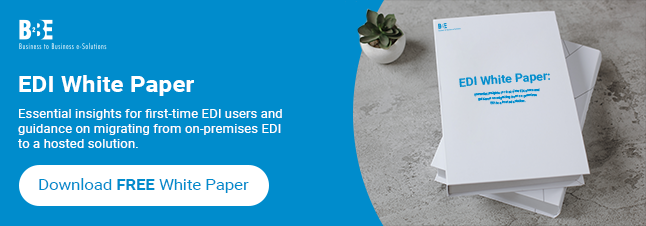Elektronische gegevensuitwisseling (EDI) plays a crucial role in modern business, streamlining the way companies handle electronic transactions. By replacing paper-based processes with digital communication between computer systems, EDI facilitates faster, more accurate, and more efficient transactions. This not only reduces costs but also improves the overall speed and reliability of business operations.
How EDI Works
EDI allows businesses to exchange documents like purchase orders, invoices, and shipping notices electronically. Instead of manually entering data into different systems, EDI enables direct computer-to-computer communication. Here’s how it works:
1. Standardisation
EDI uses standardised formats, ensuring that documents exchanged between businesses are uniform. This eliminates errors that might occur from manual data entry and therefore reduces the need for human intervention.
2. Data Translation
The data from a company’s internal system is translated into a standardised EDI format. This format is then transmitted to the receiving company’s system, where it is automatically translated back into a format compatible with their internal systems.
3. Transmission
The data is securely transmitted over a network, often through a Value-Added Network (VAN) or over the internet using secure protocols. This ensures that the information is protected during transmission.
4. Automated Processing
Upon receipt, the data is automatically processed by the recipient’s system, enabling actions like order processing or invoice generation without delay. This automation speeds up the transaction cycle and reduces the likelihood of errors.
Benefits of EDI in Electronic Transactions
1. Speed
EDI transactions are nearly instantaneous, significantly reducing the time it takes to process orders, invoices, and other documents.
2. Accuracy
By eliminating manual data entry, EDI also reduces errors, ensuring that the information exchanged is accurate and reliable.
3. Cost-Efficiency
With fewer paper-based processes and less manual intervention, companies can save on administrative costs and improve their bottom line.
4. Improved Business Relationships
Finally, faster and more accurate transactions lead to better relationships with partners and customers, as businesses can meet deadlines and manage expectations more effectively.
Conclusie
In conclusion, EDI is a powerful tool that facilitates efficient electronic transactions by automating the exchange of business documents. By leveraging EDI, companies can improve speed, accuracy, and cost-efficiency in their operations, leading to better business outcomes and stronger partnerships. If you’re looking to optimise your transaction processes, consider integrating EDI into your business strategy.
Learn more about B2BE’s EDI solution.
About B2BE
B2BE delivers electronic supply chain solutions globally, helping organisations to better manage their supply chain processes, providing greater levels of visibility, auditability and control. We’re driven by a passion for what we do, inspired by innovation, and underpinned by a wealth of knowledge. With over 20+ years of experience, the B2BE teams operate worldwide.
Ga voor meer informatie naar www.b2be.com.

